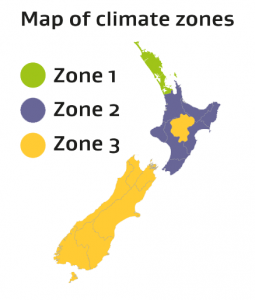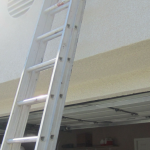A selection of this content has been sourced from Tenancy Services.
The Residential Tenancies Act 1986 requires that all landlords must disclose to tenants in new tenancy agreements (entered from 1 July 2016) the level of insulation in the ceiling and floor of the rental property. Landlords will be required to provide a statement attached to the tenancy agreement about the location, type and condition of insulation in the rental home.
Landlords must make all reasonable efforts to obtain the required information. This includes physically looking, engaging a professional to do an assessment and/or checking the council building file.
Ceiling and underfloor insulation must be installed, where reasonably practicable in all rental properties by July 2019. It must comply with the regulations and be safely installed. Wall insulation is not compulsory.
Any new, replacement or top-up insulation installed after 1 July 2016 in a rental home must meet the regulations that will apply to all rental homes from 1 July 2019. A landlord who fails to comply with the regulations is committing an unlawful act and may be liable for a penalty of up to $4,000.
The installation or repair of electrically-conductive insulation, known as foil insulation, is banned in all residences including rental homes. Anyone who breaches the ban commits an offence and may be liable to a penalty of up to $200,000.
The insulation regulations apply to any residential rental covered by the Residential Tenancies Act including rental homes and boarding houses. They will apply to sleep-outs depending on the design.
A landlord has the right to enter a rental home to comply with insulation requirements after 24 hours’ notice, and between the hours of 8:00am and 7:00pm.
What insulation to install:
1. An upgrade isn’t necessary if the rental property has ceiling and underfloor insulation that was:
- installed before 1 July 2016; and
- is in reasonable condition; and
- meets these minimum R values
| TIMBER-FRAMED MINIMUM | MASONRY MINIMUM |
| Ceiling R 1.9 | Ceiling R 1.5 |
| Underfloor R 0.9 | Underfloor R 0.9 |
If a rental property is below these levels of insulation, it must be upgraded. If any part of the existing insulation is not in reasonable condition, then the landlord must install insulation that meets the new standard required from 1 July 2016. Insulation installed before 1 July 2016 that is not in a reasonable condition cannot be repaired; it must be replaced with insulation that meets the new standard.
2. If ceiling and underfloor insulation was installed at your rental property after 1 July 2016 OR you don’t have any, you need to ensure the insulation meets the minimum new and topped up levels of insulation before 1 July 2019. It needs to meet these minimum R-values:
| ZONE 1 AND 2 | ZONE 3 |
| Ceiling R 2.9 | Ceiling R 3.3 |
| Underfloor R 1.3 | Underfloor R 1.3 |
If a rental property is below these levels of insulation, it must be upgraded.

If the rental property currently has insulation and it is not in a reasonable condition, then you must repair or replace the insulation (or part of) to meet the new standard. Where there are multiple layers of insulation and all layers are in reasonable condition, then their product R-values may be combined.
For further information, visit Tenancy Services website: www.tenancy.govt.nz




